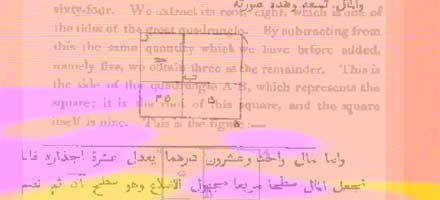By Julainne Sumich
14.09.2004 – 14.10.2004
To view work and introductory essay with animations: http://www.window.auckland.ac.nz/archive/2004/09/online.html
Amid the chaos of disordered times, that is a symptom of any war, people have shown an innate capacity for growth and adaptation, producing strange new forms of logic from paradoxes multiplied by conflict.
Art production has never been independent of the politics of violence. Whether overtly in the manner of Hartmann or Herzfeld or obliquely in the humour of Hannah Hoch, artists have demonstrated the ability to disclose the forces of oppression by minimal means of juxtaposition in montage, and in the process re-directing attention to “How must we think?” In his allusions to technology as a science of insight, Martin Heidegger talks of such conversion in his essay, The Turning, as a sudden “in-flashing”.
In this paper and Flash movie the paradoxical logic of military actions is nested within the symbolic logic of Flash architecture. Like the military, Flash uses buttons to trigger events. On release they both “go to And play”. Underpinning this tactic, al-jabr creates an allegorical equation between the principles characterized by the theory of relativity and Heisenberg’s uncertainty principle. It is a synopsis of questions concerning technology that break apart and regroup in new forms of expression.
The paradox of al-jabr juxtaposes the _root. computational logic recently demonstrated at the gates of Baghdad by a “force of liberation” with the creative force of algebraic logic studied in Baghdad centuries ago. It was here, at the House of Wisdom, that the scholar Al’Khwarizmi published his treatise Hisab al-jabr w’al-muqabala, the title of which gives us the word ”algebra”.
The behaviours of the movie’s uncertain characters are shaped by the cosmicomic of Calvino, the spin of Dirac’s constant and Boolean logic. Al-jabr’s interaction with electrons, wads of flesh, a deck of cards, and the crystal ball engineers the reflexes prototypical of game theory.
15 degrees W + 20 degrees S = http://www.window.auckland.ac.nz/archive/0409al-jabr/15degrees1.html
People often use the ‘=’ sign just to summarize what’s already known, but scientists have used it “as something of a telescope for new ideas – a device for directing attention to fresh unsuspected realms.“ ”If I say that 15+20=35, this is not very interesting. But imagine if I say:
(go 15 degrees west) + (then go 20 degrees south) = (you’ll find trade winds that can fling you across the Atlantic to a new continent in 35 days).“
The Flash program is appealing due to its capacity for short story making. Recognising that its Action Script constitutes a behind-the-scenes director of the program’s capacity for interactive narrative structure; its algebra extended my interest in narrative as ’equations’.
Blue Cursor http://www.window.auckland.ac.nz/archive/0409al-jabr/cursormovie.html
When you’re teaching yourself from the Flash Bible and neglect to read EVERY word this is what you can come up with. (Blue cursor + viral forehead flesh) their affection = (/o||o#o|\ browser)
E http://www.window.auckland.ac.nz/archive/0409al-jabr/e.html
E expresses lines of force produced by mechanics of the Flash program and human experimentation. E is positioned left field. Hand and magnet positioned on a parallel line move in circular relation to each other. In a looping action E is drawn across their magnetic field where its line of force is cut by the magnet’s line of force. Although its playback is looped the pattern of E’s circular relations, unlike Faraday’s, never comes full circle. (Faraday F) + (magnet m ) + (circular relations( -) ) = E experiment.
The physicist and chemist, Michael Faraday [1791-1867], whose discovery of electromagnetic induction led to the invention of the dynamo, was an experimentalist and largely self-taught. He didn’t think of motion as working in straight lines as science students of his day had been trained to do. His mode of thought was tuned to “the unified forces of nature” a rhythm of circular relations, a pattern he talked about in church circles and embodied in his daily life. “Faraday’s ideas about conservation of energy led him to believe that since an electric current could cause a magnetic field, a magnetic field should be able to produce an electric current. He demonstrated this principle of induction in 1831. Faraday expressed the electric current induced in the wire in terms of the number of lines of force that are cut by the wire. The principle of induction was a landmark in applied science, for it made possible the dynamo, or generator, which produces electricity by mechanical means.”
This article is based on the doctoral research of Julainne Sumich, and is ©copyright 2004
